Shade Lawn Advice
shemmy98
8 years ago
last modified: 8 years ago
Featured Answer
Sort by:Oldest
Comments (39)
dchall_san_antonio
8 years agoshemmy98
8 years agoRelated Discussions
Custom Lawn Seed - Shade & Traffic
Comments (3)Shade is probably the biggest barrier to having a great lawn, but if you get 3 good hours of full sun in the morning you should be able to grow a nice lawn. I have areas that get 2-3 hours of full that do very well. I used tall fescue. Fine fescue would have worked, but it has a lot of issues. One is that it just doesn't look all that great. It is very fine and wispy. It also goes dormant in the summer, turning a light green to tan, and it really doesn't blend all that well with any of the other cool season grasses. It also doesn't handle traffic very well, so the dogs will have to tippy toe around the yard if it's all fine fescue. I would stick with TF, focusing on the cultivars that did very well in the shade trials, page 37 (http://www.ntep.org/data/tf06/tf06_12-10f/tf06_12-10f.pdf). If you want to mix in some KBG, stick with the shade tolerant ones (Bewitched, Apollo, America, Right), stay away from the compact midnight cultivars, as they generally do poorly in the sun. There's no guaranty the KBG will survive in the heaviest shade, but in the sunnier areas it should do OK. Hogan has some of the newest and best TF cultivars, but there are other seed sellers you can try like Williams, Pawnee Buttes, FM Brown and Sons, etc. You can also usually buy 50 lb. sacks from the grower directly as well. You should also seed in the late summer/ early fall, not the spring....See MoreNeed Advice For Overseeding My Lawn
Comments (5)None of those are particularly dark or particularly light grasses, actually, although any well-treated grass will be a very nice color. My previous lawn was dominated by Abbey bluegrass and was pretty nice (although the color was the reason I changed, it was genetically too light for me). That doesn't mean it's genetically pale, my new lawn is best described as "thunder green" and so dark it disappears at night. :-) I'm suspecting the age of the lawn, plus the fact that it was planted in an old garden plot (which was undoubtedly fed differently than the lawn. So I suspect that over time it'll adjust itself considerably. First year lawns are lighter in hue....See MoreShade Lawn Advice- Phase 2: Where's the cliff
Comments (10)1) First cut to 2" is about right, and you don't want to cut off too much of the blade. However, ten days is a bit young to cut, so I'd wait until later in the week if you can, and Saturday if at all possible. 2) This actually looks like a more-normal sprout than the rather phenomenal rocket launching seed you got in Picture 1. I wouldn't give up on this just yet, but a light reseeding on Saturday or Sunday wouldn't be out of the normal range if you still feel it's not sprouting well at that point. With fescue, you still have time, and since you're waiting for the bluegrass anyway, the 2 week point is a good time to reseed. 3) I'd need a closeup of the white stuff, but from a distance it looks fungal. If so, immediate response is required--so if what you're seeing on it looks cobwebby, I'd react instantly. While any fungicide will work fine (damp-off fungus isn't terribly strong stuff), you can do a wide spectrum wipe of the spots by putting 2 Tbsp of baking soda (Arm and Hammer or any other brand) plus 2 tsp of any dish soap in a 2 gallon watering can, fill the rest with water, and sprinkle over those areas. Baking soda will probably kill 100% of the fungus pretty quickly, but if not, at least it buys you time to get a formal fungicide. General) All seedings go off like this, and you're having normal Seeding Panic. The more shadowed, damper areas of my lawn went off first, followed by the main areas, and the sunny, hot areas last of all. That's completely typical. Seeds sit and wait for their proper germination conditions, and very clearly the area by your garage was exactly perfect right at this instant. Cooler (and hopefully damper) weather will improve conditions in the other areas, and inevitably, some areas just don't sprout that well. They can be dormant seeded just before your first snowfall, or February, whichever comes first....See MoreShade Lawn Advice - Phase 2.1 - Too much water?
Comments (21)I'm having the same thoughts about the deeper soil. I know the original fill (put in November of 2013) wasn't great soil, and believe it came from a cemetery (just happened to be where the paving contractor got his fill). Coming from 6 feet down it probably is a pretty heavy mix. I thought last fall the landscape contractor had put down at least 2 " of topsoil, but who knows. He may have spread just enough to make it look good, then seeded and topped with straw before we could notice. I honestly don't think I would ever use an aerator back there. Not knowing how many tree roots, rocks or native stones there are (we have two old quarries less than a mile from us) would make me leery of using it. The chances of destroying the machine seem fairly high. Most of the stone down there is bluestone I think, but usually is in pieces no bigger than 1 foot. They didn't hit too much when they dug the fence posts, so I don't think a rock base is a huge concern. High levels of stone fragments in the fill dirt on the other hand might be a bigger issue. Should I think about slowly adding thin layers of additional soil (no more than 1/4 inch at a time) in the future? I have no worries about contour issues making drainage problems if I raise the soil level (I already have that). When do you think I should make the switch over to the less frequent watering? 1 month out? Also how long do you think I can push letting the soil dry between watering. Some areas will probably stay damp below the surface for several days, others might dry in a day or so. Only water in areas I find drying out quicker? I think I'm getting to the stage that always screws me up (i.e. leading to very thin shallow roots) so I'm trying to plan out better this time....See Moreshemmy98
8 years agodanielj_2009
8 years agoshemmy98
8 years agoshemmy98
8 years agoshemmy98
8 years agodanielj_2009
8 years agoshemmy98
8 years agoUser
8 years agodanielj_2009
8 years agoUser
8 years agoUser
8 years agodanielj_2009
8 years agoUser
8 years agoUser
8 years agolast modified: 8 years agoUser
8 years agoshemmy98
8 years agodanielj_2009
8 years agolast modified: 8 years agoUser
8 years agoUser
8 years agodanielj_2009
8 years agoUser
8 years agoUser
8 years agoshemmy98
8 years agolast modified: 8 years agoUser
8 years agoUser
8 years agolast modified: 8 years agoUser
8 years agoshemmy98
8 years agoUser
8 years agoshemmy98
8 years agoUser
8 years agoshemmy98
8 years agoreeljake
8 years agoshemmy98
8 years agolast modified: 8 years agoshemmy98
8 years agoUser
8 years ago
Related Stories

FARM YOUR YARDAdvice on Canyon Farming From L.A.'s Vegetable Whisperer
See how a screened garden house and raised beds help an edible garden in a Los Angeles canyon thrive
Full Story
HEALTHY HOMEHow to Childproof Your Home: Expert Advice
Safety strategies, Part 1: Get the lowdown from the pros on which areas of the home need locks, lids, gates and more
Full Story
DECORATING GUIDES10 Design Tips Learned From the Worst Advice Ever
If these Houzzers’ tales don’t bolster the courage of your design convictions, nothing will
Full Story
DECORATING GUIDESDecorating Advice to Steal From Your Suit
Create a look of confidence that’s tailor made to fit your style by following these 7 key tips
Full Story
KITCHEN DESIGNSmart Investments in Kitchen Cabinetry — a Realtor's Advice
Get expert info on what cabinet features are worth the money, for both you and potential buyers of your home
Full Story
MOST POPULARMeet a Lawn Alternative That Works Wonders
Carex can replace turfgrass in any spot, is low maintenance and adjusts easily. Add its good looks and you’ve got a ground cover winner
Full Story
LANDSCAPE DESIGNGet Along With Less Lawn — Ideas to Save Water and Effort
Ditch the mower and lower your water bill while creating a feast for the eyes with diverse plantings and gathering places
Full Story
LANDSCAPE DESIGN15 Great Ideas for a Lawn-Free Yard
End the turf war for good with hardscaping, native grasses and ground covers that save water and are easier to maintain
Full Story
FRONT YARD IDEASBefore and After: Front Lawn to Prairie Garden
How they did it: Homeowners create a plan, stick to it and keep the neighbors (and wildlife) in mind
Full Story
GREAT HOME PROJECTSHow to Replace Your Lawn With a Garden
New project for a new year: Lose the turfgrass for energy savings, wildlife friendliness and lower maintenance
Full Story


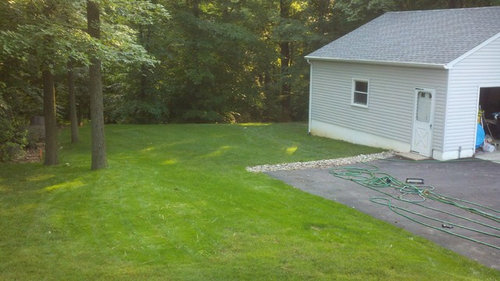
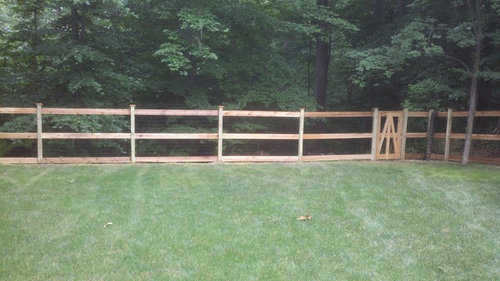
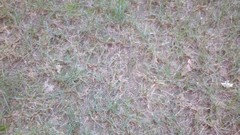
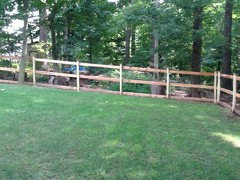
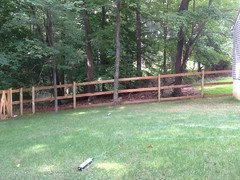

User